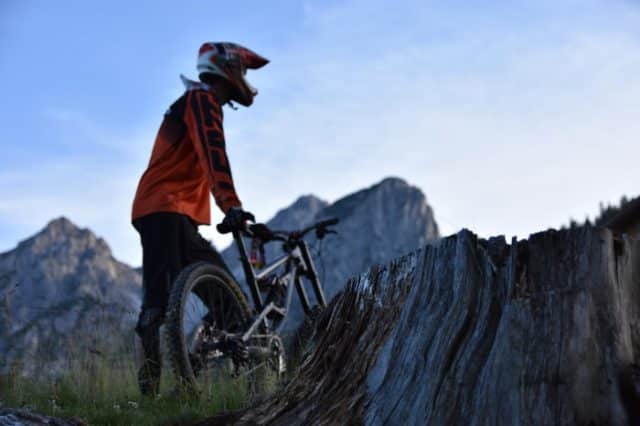Adrenaline junkies will affirm that off-road mountain biking is among the most exciting of outdoor adventures. As you thrive off of a mental high, you get to pass along breathtaking scenery many people can only dream of seeing.
As per Statista, around 9.1 million Americans participated in mountain biking in 2023. This was a 4.1% increase from the year prior. More and more people are getting hooked on this sport, an important aspect of which is safety.
Mountain biking is physically demanding and can lead to injuries to the face, neck, head, and legs if the rider is underprepared. In this article, we will discuss four useful tips for enjoying a safe off-road adventure.
Choose the Right Bike
Every avid cyclist understands the importance of the right bike for mountain biking. If you already own a bike, consider whether it is in good condition for a steep ride. Here are some key areas you must thoroughly inspect.
- Do the tires have the correct pressure or is more air required?
- Are the brakes squealing?
- Does the chain require cleaning due to gunk or rust?
- Are the pedals in need of repair?
Have your bike checked and repaired to ensure it is ready to hit the trails. If you plan to purchase one now, consider factors like terrain, riding style, budget, wheel size, etc. before buying.
For instance, a hardtail bike is more suitable for less steep terrain whereas a full-suspension bike is ideal for rougher landscapes. If you’re a part of a biking community, ask for recommendations, weigh your options, read reviews, and then bring home the right bike.
Prepare Your Body
Mountain biking is considered a high- to moderate-intensity physical sport. It requires the engagement of multiple muscles throughout the body, which means good core strength, cardiovascular fitness, and leg power are important for navigating the challenging terrain.
Just like you need to prepare yourself to prevent injuries while on the trails, you also need to get your body ready for the ride. Given this sport’s repetitive leg motion, good knee joint health is extremely crucial. This will not only prevent pain during the ride but also reduce the risk of injuries.
The knees are supported by muscle strength in the hamstrings and quadriceps, which help stabilize the joint. According to Motive Health, foods rich in Vitamin D and calcium strengthen these muscles and build stability in the knee joint.
Besides consuming foods like tofu, broccoli, dairy products, and egg yolks, you must train before the big day. The more you practice biking across trails, the better your endurance will be.
Also, engage in exercises like lunges, planks, squats, and single-leg deadlifts for greater strength. Stay sufficiently hydrated and get proper sleep which helps build flexibility and enable the body to recover.
Assess Your Skill Level
Only you can be the best judge when it comes to your mountain biking skills. Some of the most common skill levels include beginner, novice, intermediate, and advanced. Proper skill assessment will help you choose the right trail.
Your local biking trails will vary in terms of scenery, terrain, and difficulty. Trails marked by steep slopes, challenging climbs, and uneven or rough terrain are most suited for intermediate or advanced riders.
Easy-level trails suitable for beginners or novices would involve gentler slopes and smoother or flatter terrain. At its heart, mountain biking is essentially a technical sport, and skill matters.
If you’re unsure about a particular trail, do not venture until you’ve brushed your skills against easier terrain. This will considerably reduce the risk of injuries and ill-health.
Wear the Right Gear and Carry Useful Tools
The importance of putting on the right gear cannot be overstated in the case of mountain biking. The Outside Magazine shares the mountain biking story of a rider who biked from Mexico to Canada.
The route was a 2,700-mile Great Divide involving remote, rugged, and challenging terrain. The rider spent 45 days to complete his journey and he carried a wide variety of gear to make it possible. This included sleep setup, bikepacking bags, clothing, and electronics.
Perhaps your trip will not be as extended as this. Even then, safe mountain biking will require important gear and accessories. Let’s prepare a rundown of the possible gear items you need to have under check-
- A biking helmet that protects your head at all times
- Biking gloves to avoid developing skinned knuckles
- Durable clothing that won’t rip easily and is not too baggy. It is best to invest in clothing with sufficient padding to protect knees, elbows, and wrists.
- Glare-resistant goggles that will protect your eyes against debris, high wind, and sun rays
- A basic repair kit involving a mini air pump, tire pry pods, and a spare tube
- A cell phone and a flashlight are also a must
So, do you feel confident enough to start or start again your mountain biking adventures? If you do not belong to a mountain biking-friendly state, experience the best of this sport across places like Massachusetts, Colorado, California, and Washington. They have a bikeability rate that is 70% or above.
Unlike road cycling, mountain biking may involve a multitude of challenges that exceed the simple act of pedaling. However, the joy and thrill this sport involves is equally greater. Prepare yourself and take the plunge into a whole new world of adventure.

A professional writer with over a decade of incessant writing skills. Her topics of interest and expertise range from health, nutrition and psychology.




